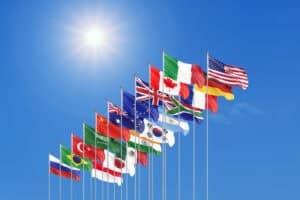‘We are family’, together fighting the wind to start a braai, says researcher Yinhla Shihlomule.

Even now, after he’s been on a few expeditions to Marion Island and brought back photos and videos to show them, Yinhla Shihlomule’s family in Limpopo still cannot quite understand why he would want to stay for months at a time on a freezing, wet lump of rock more than 2 000km from Cape Town in the stormy sub-Antarctic Indian Ocean.
At first, even he admits, the stark volcanic island – which is South African territory and a registered nature reserve – seemed to be hard to love.
“You ask yourself, when you arrive, ‘have I made the right decision?’ But you come to realise it is a unique place with its own beauty and a part of the world which is still pristine.”
ALSO READ: Research island: Marion tells her secrets
A PhD candidate working for South African Polar Research Infrastructure as a Top Predator Coordinator, Shihlomule is tasked to observe the island’s seals, killer whales and seabirds. And he has grown to love the animals.
“I think they are beautiful,” he says of the creatures which are part of a fascinating mix of mammal and birdlife on the island and its sibling, Prince Edward Island.

His thesis is focused on seals, but he also studied the apex predators in the area, the elegant but deadly orcas, better known as killer whales, during his expedition years. Their populations have remained steady while the elephant seal numbers have been showing a slight increase, both of which, he says, are indications that the ecosystem is in good condition.
The seals and orcas, as well as the four species of penguins found in the area are all “ indicator species” – those whose health echoes that of the area.
ALSO READ: Why subantarctic studies matter
Generally about 20 people remain over winter on Marion Island – although for us back in sunny South Africa, it is difficult to understand what those researchers might regard as winter, given that the average annual temperature hovers around 4oC and there is about 2 500mm of rain and snow every year.
Everyone who goes to Marion Island – and it is open to researchers and support staff only – is equipped with the gear needed to survive in sub-Antarctic conditions. Yet, says Shihlomule, if you are new to the island, you must be accompanied at first when you walk around because it can be dangerous, with the changing weather and slippery volcanic rocks.

Fortunately, he laughs, as a boy growing up in Limpopo, “I never wore a jersey and seemed to like the cold…”
The cold on Marion and Prince Edward is something else, though, but “even when I am out working, I know I will always get back to some hot coffee… and that is something to look forward to.”
Shihlomule is one of thousands of dedicated researchers who, since SA annexed the territory in 1947, have been providing internationally respected research data and analysis. This work, he believes, is vitally important, not only for South Africa, but for the world in the light of climate change, because “what we are doing is for future generations. That is why we are proud of what we do…”
While the islands are a challenging place to live, Shihlomule believes the islanders have developed a “common understanding” and live together as a family.
When the weather is bad, he relaxes with books, chess or puzzles, while the community are known for their fondness for partying… So, pretty much like the rest of us, with the added complication of trying to get a braai started in a howling gale.
ALSO READ: More land for four of SA’s national parks






